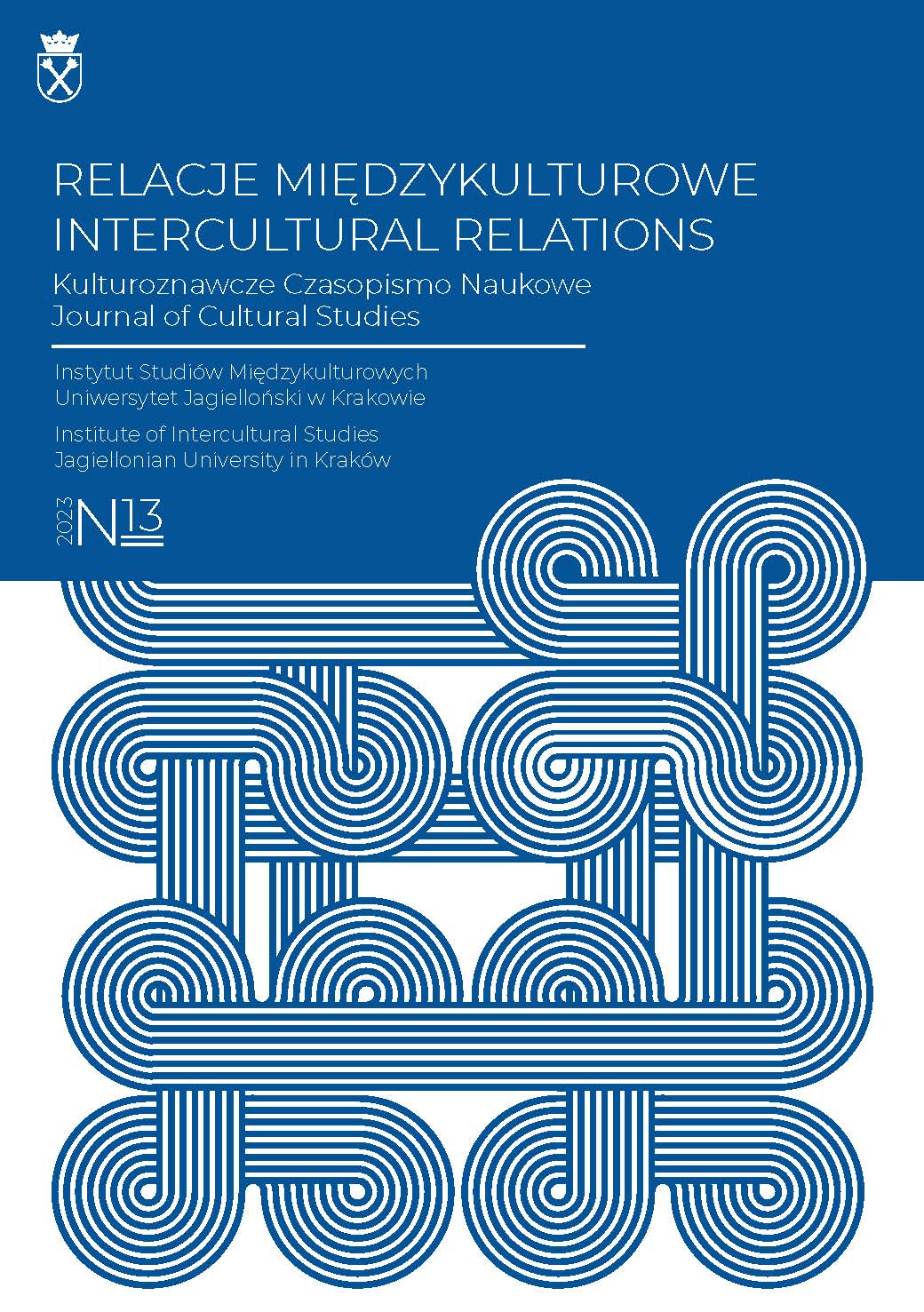Miotani wichrem wojny. Chińscy uchodźcy w czasie wojny z Japonią 1937–1945
DOI:
https://doi.org/10.12797/RM.01.2023.13.01Keywords:
Republic of China, refugees, Sino-Japanese war 1937-1945Abstract
TOSSED ABOUT BY THE WINDS OF WAR. CHINESE REFUGEES DURING THE WAR WITH JAPAN 1937–1945
The Sino-Japanese War drove tens of millions of Chinese people from their homes. Only occasionally did they receive any help. Some had never returned home. A majority of the refugees were men. Many of them (sometimes even a half half of them) were related to the sphere of culture and education. This was surprising since the average Chinese was illiterate. The Republic of China’s government attempted to evacuate universities and secondary schools. It also did not have the means to arm all the men of military age.
References
Barbasiewicz, O. Ocaleni w Azji Wschodniej. Działalność państwa polskiego w latach 1940–1945 na rzecz obywateli RP – uchodźców w Japonii i Szanghaju (w druku).
Barbasiewicz, O. 2020. Polish Jews: War Refugees in Japan and Shanghai: Striving towards Normality in Abnormal Times. W: L. Venckauskas (ed.), Conventions, Quotas, Refugees: European Jews in 1938–1945, Vilnius: „Versus” Publishers, 51–70.
Bergère, M.-C. 2002. Histoire de Shanghai, Paris: Fayard.
Brook, T. 2005. Collaboration. Japanese Agents and Local Elites in Wartime China, Cambridge Mass.: Harvard University Press.
Chang, I. 2013. Rzeź Nankinu, Warszawa: Wielka Litera.
Chang, V. K. L., Zhou Y. 2017. Redefining Wartime Chongqing: International Capital of the Global Power in the Making, 1938–1946, Modern Asian Studies, vol. LI, No. 3, 577–621.
Ch’I, H.-s. 1992. The Military Dimension, 1942–1945. W: J.C. Hsiung, S.I. Levine (eds.), China’s Bittter Victory, 1937–1945, Armonk: Routledge, 157–184.
Corcuff, S. 2002. Taiwan’s ‘Mainlanders,’ New Taiwanese?. W: eadem (ed.) Memories of the Future: National Identity Issues and the Search for a New Taiwan, Armonk: Routledge, 192–193.
Danke, L. 2010. Echoes of Chongqing: Women in Wartime China, Urbana: University of Illinois Press.
Dehergne, J. 1946. Le Père Jacquinot. W: Bulletin de l’Université l’Aurore, vol. 7, i–vi.
Fang, W. et al. 2017. A Study on the Early Chinese Steel Rails Heritage of Haynehping Company, China. W: M. Ceccarelli et al. (eds.), New Activities for Cultural Heritage. Proceedings on the Conference international HeritageBot 2017, Cassino: Springer, 43–53.
Fogel, J. (ed.) 2000. The Nanking Massacre in History and Historiography, Berkeley: University of California Press.
Hsu, L.-h., Chang, M.-k. 1971. History of the Sino-Japanese War, Taipei: Chung Wu Publishers.
Farmer, R. 1945. Shanghai Harvest. A Diary of Three Years in China War, London: Museum Press Limited.
Fenn, W. 1940. The Effect of the Japanese Invasion on Higher Education in China, Hong Kong: China Institute of Pacific Relations.
Henriot, Ch. 2006. Shanghai and the Experience of War: The Fate of Refugees, European Journal of East Asian Studies, vol. V, No 2, 217 248.
Chaozhu, J. 2008. The Man on Mao’s Right, New York: Random House.
Lang, O. 1937. Foreign and Chinese Shanghai Faces War, Amerasia, No. 1 (9), 415–422.
Lary, D. 2012. Chinese Migrations. The Movement of People, Goods and Ideas over Four Millennia, Lanham: Rowman & Littlefield Publishers.
Lary, D. 2010. The Chinese People at War. Human Suffering and Social Transformation, Cambridge Mass.: Cambridge University Press.
Lary, D. 2001. Drowned Earth: The Strategic Breaching of the Yellow River Dyke, 1938, „War in History”, vol. VIII, No. 2, 191–207.
Lary, D. 2005. Faith and War: Canadian Jesuits and the Japanese Invasion of China, Modern Asian Studies, vol. XXXIX, No. 4, 825–852.
Lincoln, T. 2011. Fleeing from Firestorms: Government, Cities, Native Place Associations and Refugees in the Anti-Japanese War of Resistance, Urban History, vol. XLVIII, no. 3, 437–456.
Lopes, H. F. S. 2023. The Impact of Refugees in neutral Hong Kong and Macau, 1937–1945, The Historical Journal, vol. LXVI, 210–236.
MacKinnon, S. R. 2008. Wuhan, 1938. War, Refugees and the Making of Modern China, Berkeley: University of California Press.
Mitter, R. 2013. Forgotten Ally. China’s World War II, 1937–1945, Boston: Houghton Mifflin Harcourt.
Moscolino, M. 2010. Refugees, Land Reclamation and Militarized Landscapes in Wartime China.
Huanglongshan, Shaanxi, 1937–1945, Journal of Asian Studies, vol. LXIX, No. 2, 463–479.
Pfeiff, A. 2018. Two Adoptions of The Red Cross: The Chinese Red Cross and the Red Swastika Society from 1904 to 1949, praca doktorska obroniona na uniwersytecie florenckim, 166–168, https://cadmus.eui.eu/bitstream/handle/1814/50126/Pfeiff_2018_HEC.pdf?sequence=1&isAllowed=y – 13 I 2023.
Polit, J. 2018. Gorzki triumf. Wojna chińsko-japońska 1937–1945 (wyd. II), Kraków: Avalon.
Potocka, E. 2021. Makau. Element chińskiej wizji świata, Toruń: Grado.
Ristano, M. R. 2008. The Jacquinot Safe Zone, Stanford Calif.: Stanford University Press.
Ross, J. E. 1994. Escape to Shanghai. A Jewish Community in China, New York: Free Press.
Terrill, R. 2001. Mao. Biografia, Warszawa: Wydawnictwo Iskry.
Schoppa, K. R. 2012. In the Sea of Bitterness. Refugees during the Sino-Japanese War, Cambridge Mass.: Harvard University Press.
Tow, E. 2011. Great Bombing of Chongqing and the Anti-Japanese War, 1937–1945. W: M. Peattie, E. Drea, H. van de Ven (eds.), The Battle for China. Essays on the Military History of the Sino-Japanese War of 1937–1945, Stanford Calif.: Stanford University Press, 256–282.
Wakeman, F. 1996. The Shanghai Badlands, Cambridge Mass.: Cambridge University Press.
White, T., Jacoby A. 1946. Thunder out of China, New York: Andesite Press.
Yamamoto, M. 2000. Nanking: Anatomy of an Atrocity, Westport. Conn.: Praeger.
Yang, M.-H. 2012. The Great Exodus: Sojourn, Nostalgia, Return and Identity Formation of Chinese mainlanders in Taiwan 1940s–2000s, Vancouver, 50–61, rozprawa doktorska na The University of British Columbia https://open.library.ubc.ca/soa/cIRcle/collections/ubctheses/24/items/1.0073109 – 7 I 2023.
Downloads
Published
Issue
Section
License

This work is licensed under a Creative Commons Attribution-NonCommercial-NoDerivatives 4.0 International License.






